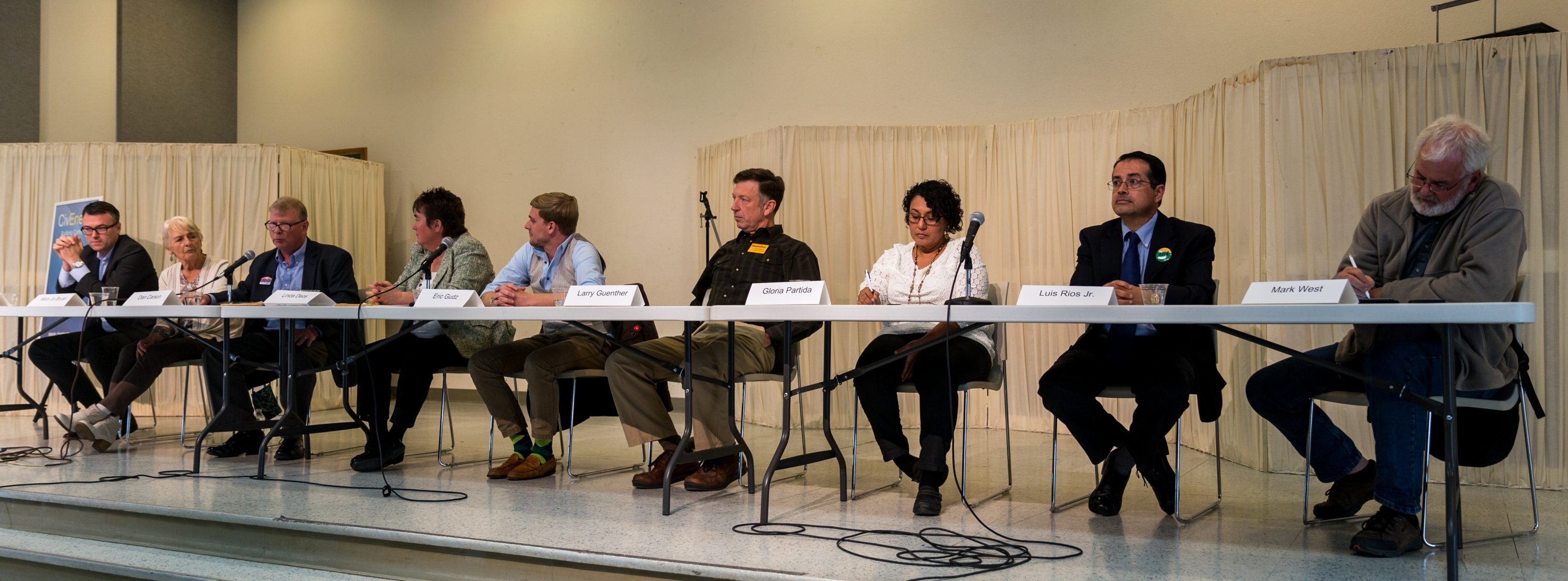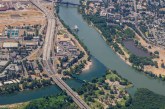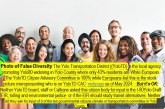
by Alan Pryor
The Sierra Club Yolano Group recently provided a questionnaires for Davis City Council candidates in which we asked for written responses on a wide range of environmentally-related issues of importance to our local electorate and our members in the following general categories:
- Land Use & Housing Development (https://www.davisvanguard.org/2018/04/sierra-club-yolano-group-2018-council-candidates-part-2-land-use-housing-development-questions/#)
- Energy Use and Greenhouse Gases (GHGs)
- Waste Management
- Water Management & Conservation
- Transportation Management
- Toxics in the Environment
- Other Environmental Concerns
- Financial Contributors
An introductory article in the Davis Vanguard explaining the process and listing all of the questions together can be found at https://www.davisvanguard.org/2018/04/sierra-club-yolano-group-2018-questionnaire-davis-city-council-candidates/.
Because of the extraordinarily large number of candidates vying for the 2 available seats and the amount of space it would require to report all of the responses in a single article, we are reporting the answers in one or two general categories per day. This is the 3rd in this series and will have questions and answers on Energy Use and Greenhouse Gases (GHGs).
This article asks questions about the following issues in order:
- New Construction Building Standards
- Greenhouse Gas Mitigation
- Commercial & Multi-Family Solar PV Ordinance
- Other Energy Conservation Measures
Additional articles with questions and answers in other categories will be provided in subsequent articles in the order of the categories given above. Previous Vanguard articles with questions and candidate answers in other general categories can be accessed by clicking on the link following the category in the list above.
This candidate responses are in the same order for each question to facilitate review. The order in the first article on Land Use and Housing Development was originally arranged alphabetically by last name. The first two names were subsequently lowered to the last two slots in this article which practice will continue throughout the series.
Sierra Club policy only allows endorsements of candidates up to the number of seats being contested – or two in the case of the current Davis City Council race. Given the obviously strong environmental credentials of most of the candidates, and in all fairness, we are unable to limit our support to only two candidates from this very qualified field in this election. Thus, the Sierra Club Yolano Group must take “No Position” in this race. That said, there are some notable differences between the candidates in general and on specific issues so we provide Davis voters and our members with the questions and the candidates’ responses for their consideration.
Issue – New Construction Building Standards
Question –
Recently, the Marriott, Hyatt, Lincoln40, Sterling, and Nishi projects were all approved by the City Council with a LEED-Gold equivalency standard and requiring all net electricity purchases be at the fully renewable “Green” tariff either through the new Yolo Co Community Choice Energy program or PG&E.
Do you support formally increasing the City’s minimum commercial building standards to LEED-Gold or the equivalent with all net electricity purchases at the fully renewable “Green” tariff and why or why not?
Answers –
Dan Carson –
Since the California Energy Efficiency Strategic Plan already calls for all new residential construction to be Zero Net Energy by 2020, and all new commercial construction to meet that standard by  2030, it is imperative that Davis maintain its historic leadership in the clean energy arena. There are a variety of ways to reach ZNE, and for large-scale projects such as Nishi the goal should be to provide sufficient on-site generation to meet energy needs. We can learn from the experience of UCD’s West Village project, which has produced good data to improve energy-use projections. For smaller scale projects, a fully renewable requirement has become realistic and achievable with the arrival this year of the Community Choice Energy program. That will ensure there are adequate renewable energy choices for project developers to meet that requirement.
2030, it is imperative that Davis maintain its historic leadership in the clean energy arena. There are a variety of ways to reach ZNE, and for large-scale projects such as Nishi the goal should be to provide sufficient on-site generation to meet energy needs. We can learn from the experience of UCD’s West Village project, which has produced good data to improve energy-use projections. For smaller scale projects, a fully renewable requirement has become realistic and achievable with the arrival this year of the Community Choice Energy program. That will ensure there are adequate renewable energy choices for project developers to meet that requirement.
Linda Deos –
Yes. Requiring such standards ultimately increases access to renewable energy and encourages further development of solar and wind production and less reliance on coal production. Green tariffs create a path forward for renewable energy within a utility business model – a model we are already used to for purchasing electricity.
Eric Gudz –
Yes. We are in serious risk of not attaining our long-term sustainability goals, and our building energy usage is an excellent way for us to stay on target. Additionally, we have many strong examples established within the city and university that make this policy push realistic and attainable for all future development. Building upon these most recent examples, I would advocate for us to codify these standards in our next general plan update, and would continue to foster more collaborative action between our university researchers and the city staff to keep us at pace with the rapid changes to our energy and technology knowledge base
Larry Guenther –
Yes. If these projects can do it, it is obviously economically viable. We need to stop putting off addressing our negative impact on the environment and move in a decisive manner toward reducing that impact.
Gloria Partida –
Yes – I believe it is our responsibility to hold our community accountable to live up to standards that are in the best interest of communities. Also it is a smart way to save money while addressing sustainability.
Luis Rios –
Yes. I support sustainable energy measures for all future building of housing, hotels and other public structures. In the 21st Century, the City of Davis needs to prioritize smart growth planning and green-oriented policies across city parks, greenbelts and public spaces. The City under new City Council membership must take the lead and establish green-standards for planning, designing, and building the next generation of housing in Davis. It is important that affordable housing include sustainable energy features and adhere to innovative building standards within green parameters.
Mark West –
I support these as recommendations, but not has mandates. We already have in place too many upfront costs on new development and as a result have created a serious impediment to meeting our community’s housing and fiscal needs. We should re-examine and prioritize our current mandates and exactions to determine which combination provides the best value for the community while also creating incentives for developers to meet our current and future needs. New mandates should be considered along with all the existing requirements and not simply added in an ad hoc manner.
Ezra Beemer –
Yes, I support making Davis a world leader in sustainable planning and development. I will work to make our energy supplier 100% renewable, and 100% locally produced, which I think is also very important as it will create local jobs and know-how.
Mary Jo Bryan –
Yes, I do support increasing the City’s minimum commercial building standards to LEED Gold. If we are going to achieve the City’s Climate Action Plan goals, new construction needs to lead the way. I also believe the community should consider setting the minimum commercial building standards as Net Zero Energy.
Issue – Greenhouse Gas Mitigation
Question –
Often 60% or more of a new project’s GHG (greenhouse gas) emissions are due to transportation-related impacts. Some have proposed that developers pay for mitigation of these GHGs because they cause public harm just as sellers of tobacco pay a tax for their associated public harm.
Do you support in principal a GHG mitigation fee on new development in Davis and why or why not?
If yes, do you have any ideas how such a fee might be assessed?
Answers –
Daniel Carson –
I do not support a GHG mitigation fee on new development, in the main because I believe there are more effective and efficient policies to mitigate transportation-related impacts that provide broader, direct community benefits. A mitigation fee could be difficult to implement and costly for the city to administer and would be subject to complicated provisions in the state Constitution governing fees and taxes. My experiences gained as deputy of the Legislative Analyst’s Office, which included responsibility for our office’s work on environmental policy issues and GHG reduction strategies, leads me to believe that better approaches are available to addressing the serious challenges posed by global warming.
For example, we have a serious jobs-housing imbalance in Davis, complicated by a shortage of student and faculty housing, that contributes to GHG emissions. We need to encourage smart and sustainable land-use policies and housing projects that will reduce car trips by making it possible for existing car commuters to instead live in places where they can walk, bicycle or take transit to work. We especially need to explore infill housing in downtown and in South Davis, including potential infill sites owned by the City of Davis.
Other GHG mitigation measures include improving our connections to existing bike paths and creating safer bike routes; carrying out requirements that new commercial and industrial projects include car-charging stations and congestion management plans to encourage car-pooling, use of mass transit, and commuting by bicycle or walking; and ensuring that new single-family housing includes battery storage to enable overnight charging of electric vehicles with solar energy stored from the daytime hours.
Linda Deos –
I would first support a requirement that developers use construction equipment that uses alternative fuels and/or electric and hybrid construction equipment before I would take the step of charging a mitigation fee. If a project cannot fully mitigate construction emissions. I would support a mitigation fee rate similar to that applied in Sacramento County.. Currently, its rate is $30,000 per ton of emissions, adjusted annually, with a 5% administrative fee assessed to this fee.
Eric Gudz –
I would in principle support a GHG mitigation incentive program whereby new developments would have the opportunity to offset potential GHG emissions with additional funding for bicycle and public transportation infrastructure as well as offering programs and packages to their tenants and residents to encourage a reduction in personal vehicle usage. If new developments do not wish to offer such incentives, they can compensate through a GHG mitigation fund which the city could establish with the help of citizen commissions and through the general plan update process. These funds can be applied to air-quality studies and city-wide transportation dynamic studies similar to the Campus Travel Survey done at UC Davis.
Larry Guenther –
No.
- A) We cannot simply keep adding costs to construction and expect new development to remain financially viable.
- B) This approach seems like paying someone to find your horse because you don’t want to lock the stable door; i.e. reacting to the problem after it is allowed. I prefer not causing the harm in the first place. Changing building code to have parking maxima vs. minima and requiring new construction to incorporate local/regional transportation alternatives; e.g. requiring hotels to be built within walking distance of existing transit hubs or requiring the addition of new infrastructure that connects to existing transit infrastructure seems to me a more efficient way to proceed. Said another way, new building should be required to connect into local/regional transportation in a robust way as part of the building plan.
Gloria Partida –
Yes I think all projects that produce GHG should be assessed a fee. I am unsure of what a fair price would be for emissions produced.
Luis Rios –
Yes. I believe developers must pay an incentive fee to mitigate for transportation-related impacts. In smart growth planning, realtors, developers, city staff and city council members, including community stakeholders need to take part in future housing building projects within green-oriented standards and policies. We cannot afford to delay or avoid measures that ensure a safer and cleaner environment for the Davis community. Depending on the property value and cost to build, city staff can calculate and speculate on a potential percentage to charge developers. Variable factors and indicators need to be considered to assign a fair and just fee for potential developers to pay the City.
Mark West –
GHG emissions are best regulated at the State or Federal level and not locally. I do not support local GHG mitigation fee, or any other local ‘sin’ taxes.
Ezra Beemer –
For a quantified ‘externality’, yes. I am also open to proposals that are developed and fully vetted by the community.
Mary Jo Bryan –
I would support a mitigation fee on new development in principal but to be honest I not familiar enough with how greenhouse gas emissions are measured. I would want to know the economic consequences both for (amount of income generated) and against it (increased cost of a house or doing business) before I voted for it. If I’m elected I will study up on the issue, and listen to persons who are knowledgeable before I make a decision.
I do support increased and convenient alternate modes of public transportation for both the public and students. I live in Rancho Yolo and public transportation needs to be much more convenient before I would readily use it.
Issue – Commercial & Multi-Family Solar PV Ordinance
Question –
There currently is a mandatory solar PV requirement for new single-family home construction in Davis. However, there are currently no similar requirements for new multi-family housing or commercial construction.
Do you support a proposed ordinance mandating solar photovoltaic systems on new multi-family housing, or commercial construction in Davis if not otherwise planned for a net-zero energy use?
Answers –
Daniel Carson –
On-site generation from solar PVs would very likely be part of the equation for any multi-family housing or commercial project to meet its ZNE requirement, but there may be situations where that is impossible or at least impractical. A net-zero energy requirement is preferable in my view to an inflexible mandate for solar PVs on every project.
Linda Deos –
Yes. I want to see all commercial construction be net-zero carbon and micro-grid ready. Solar PV systems can be a means to making this possible.
Eric Gudz –
I believe we are ready for such an ordinance and support it in concept, but I’d like to get a little more feedback from the building community and energy researchers to better understand what the major impediments are for this at present to ensure that it can be implemented in the best way possible for our community. I think that if we are serious about our climate change and sustainability goals for the next century of Davis that we need to do everything we can to transition to fully renewable energy within our residential and eventually our commercial units.
Larry Guenther –
Yes.
Gloria Partida –
I think photovoltaic systems should be employed as much as possible. I do not see why multi-family units should be excluded.
Luis Rios –
Yes. I would support an ordinance mandating solar photovoltaic systems on new multi-housing housing in Davis, including commercial construction. In smart growth planning, Davis needs to set the example in the sustainable energy-based housing building. The City needs to attract developers who are committed to solar systems and have a proven track record on net-zero energy use. Developers need to be committed to green-based standards for future building in Davis.
Mark West –
I support the use of Solar systems with all new construction. As I stated above, new mandates should be considered and prioritized along with all the existing requirements and not simply added in an ad hoc manner.
Ezra Beemer –
I think we should require net zero energy for new developments MFD and commercial developments. PV is only one method for shifting energy consumption. We must allow each project flexibility in how best to achieve our community goals, whether using solar hot water, ground loop space heating and cooling, PV, or alternative lighting strategies.
We should strive to achieve a world class approach to sustainability in our planning, development, energy, water and waste management. World leadership will also develop a valuable asset for the community in terms of outside investment and local know-how, increasing non-tax sources of revenue for the City.
Mary Jo Bryan –
Yes, I would definitely support a proposed ordinance that mandated new multi-family and student-dorm apartments having solar photovoltaic systems. The Sterling Apartments were approved with only outside solar lighting. That was disappointing.
Issue – Other Energy Conservation Measures
Question –
What additional steps could be taken by the City, its businesses, and residents that you believe would be most effective in reducing the City’ s overall energy use and GHG emissions?
Answers –
Daniel Carson –
The transportation sector remains the biggest challenge for California and for the city to meet GHG emissions goals. Our family has driven nearly 200,000 miles in all-electric vehicles over the last 20 years, so I know they are a practical and effective means of transportation that contributes both to reductions in GHG emissions and other forms of air pollution. The city needs to explore what incentives are possible to encourage the purchase and use of zero emissions vehicles. As stated earlier, a requirement to include battery storage in new single-family homes could be one such incentive. The city should also explore the possibility of providing additional preferential parking spaces for ZEVs, requiring any new or remodeled gas station to include a fast-charging facility, or providing financial incentives to city employees who drive a zero emissions vehicle, comparable to incentives offered to users of mass transit systems.
Linda Deos –
Implementation of Valley Clean Energy is a huge step we are taking here in Davis – especially as businesses and residents see that this is a real alternative to PG&E. Providing electric assist bicycle stations around town through Jump is another great step we are taking. We also need to build more electric charging stations throughout Davis.
Eric Gudz –
The biggest step we can take as a community is to resolve the conflicts within our land use and zoning to house as much of our community within the city limits as possible. Our commuter base is increasing exponentially, and the majority of those who are commuting to and from Davis are using their personal vehicles. Not only does this add more traffic, congestion, and back-up on our local roadways which increases localized pollution, but it also exacerbates our regional GHG emission portfolio by adding hundreds of thousands of vehicle miles traveled (VMT) to our region. By building more housing in Davis, there will exist greater incentives for citizens to use their bikes and public transit (as we have seen in the research on Campus).
Larry Guenther –
- Re-developing our downtown with multi-story, multi-family housing and requiring minimum average densities for all new housing developments.
- Wiring new construction for low-voltage, LED lighting.
- Adding verifiable passive solar methods to LEED guidelines would allow improved reduction of GHG’s; i.e. eliminating the need for air conditioning units is better than having an Energy Star air conditioning system. Currently a building gets no LEED points if there is no AC system, but does get LEED points for an Energy Star AC system.
Gloria Partida –
I think we can ask all city vehicles and public transportation vehicles be energy efficient. Also we can upgrade all heating and air systems as well as lighting systems.
Luis Rios –
The City of Davis can adopt the following to reduce energy use and GHS emissions:
- Use LED light bulbs in traffic lights and street lights
- Use police officers on bicycle patrol and avoid fuel prices and ongoing vehicle costs and maintenance
- Use electric or hybrid-powered city-owned vehicle pool
- All housing needs to have sustainable energy features
- Invigorate city recycling programs across the city
- Sponsor green-based businesses and best practices for local businesses
- Eliminate wood-burning at nighttime
Mark West –
The greatest impact on GHG emissions will come through reducing commuting traffic in and out of Davis. Davis can reduce commute traffic by expanding economic development in town, creating high quality private sector jobs for residents, and by increasing housing inventory so that people who work and go to school in Davis can also afford to live here. People who live close to where they work or go to school, or have access to readily available and affordable public transportation, drive less than their peers. Those are the most cost-effective ways of dealing with the issue.
Ezra Beemer –
If elected to the City council, I would be a strong advocate for a 150% renewable electricity system. It would be more than 100% because we would target transportation and water heating, for example. I have already developed a plan for achieving this with members of the advisory group. I think we could be 100% renewable using locally produced energy within 3-5 years. And reach the 150% within 5-10 years.
I do this sort of energy system planning for a living, so understand the challenges and successful approaches.
Other elements of a more sustainable energy system include
- DMUD
- Coordinating with UCD and DJUSD in ride sharing and electrification of the transport system
- Pedestrianize the downtown with more peripheral parking and heavy goods delivery service
- Provide convenient wait zones for ride sharing / taxi services
- Facilitate a free bike use program and preferential thoroughfares
- Encourage pedicabs
Mary Jo Bryan –
Improving the convenience of public transportation, improving lighting, bike paths, and sidewalks to promote walking and bicycling, and addressing the downtown parking would be my suggestions.






I’m not interested in new developments paying their way around e.g. peripheral siting. Reducing VMT and pollution is not possible if the only switch is from gas to electric, even if it’s 100% solar-sourced. Housing for cars – i.e. parking lots – is such a ridiculously-stupid waste of space when there is not enough parking for “beds” for humans, so any solar panels placed over them should be no more significant than a toilet bowl lid in terms of green measures. (How ’bout we build teacher housing in the DHS parking lot on 14th, and move the existing solar panels to its roof?)
Will any candidates push for retrofitting solar panels onto existing homes an other structures? I’m happy for the general inclination amongst all candidates towards solar mandates, but what about all the Davis housing – especially what was constructed in the past few decades – having roofs that facilitate the placement of solar panels? Is there a huge difference in cost between adding solar to a new home or to an old one? When renters pay for electricity directly to the provider and separate from their rent, is their any incentive for landlords to install solar?